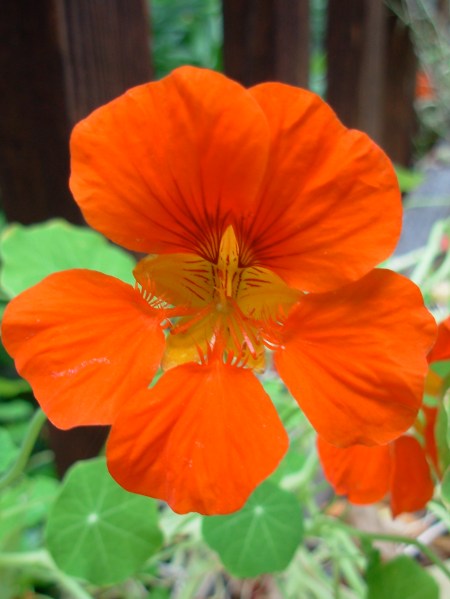
With Earth Day upon us, not to mention the warmer and longer spring days, many of us have been heading into our gardens. Around much of the Northern Hemisphere, this is the peak time to sow some seeds into the ground, as well as plant a lifelong gardening habit into the children in our lives.

Gardening helps families spend time together outdoors, take pride in growing our own food, and connect to others who have lived on the land before us. Although gardening offers a bounty of simple wonder, beauty and fun for even the smallest children, it doesn’t hurt to employ a few methods for getting and keeping them especially engaged.
Here are some simple ways to maximize your child’s interest in the garden.
Let children select some plants they want to grow. Something magical happens when one has ownership of a project from its initial stages. When choosing plants, check that you have the right growing conditions for them to help ensure a successful experience. Planting information is available on seed packets and through garden-supply store folks, who are generally very helpful. You can choose seeds, young seedlings, or a combination of the two. Seeds are more cost-effective and can be especially rewarding and wondrous. Bedding plants of course give your garden instant color.
(As an aside, my daughter always picked marigolds, as did I when I was a kid. They’re so colorful and cheery and happen to be easy to grow from seedlings or seeds. Perhaps most children are drawn to bright marigolds.)

Chop chores into small blocks. Kids can lose interest if the project seems daunting. Try to break up the tasks into doable chunks and over more than one session if necessary.
Make a sign that identifies the garden, area, or container as the child’s. The sign can be as simple as a painted rock or as ambitious as a mosaic-tile kit from an art-supply store. If other people are sharing the garden, you can still identify different children’s plantings by putting each name on a wooden stick (available in bags at garden-supply stores) in permanent ink.
Create a fun space in the garden. This can be a hiding place that you create with trellises or plantings; a tree stump that can serve as a table for tea parties; or an area that is decorated with whimsical objects you make or find. For instance, pipe cleaners and beads can be used to make simple butterflies, mushrooms and flowers — they can be placed among the plants and can get wet and still last a long time.

Attract animals to your garden. Certain plants and flowers are known to attract various butterflies and birds. This can add another level of delight for children. The National Wildlife Federation has information about how to turn any garden into a habitat for wildlife. Even if you don’t get your garden “wildlife” certified, there are a lot of fun, helpful tips for bringing creatures into your yard.
Let your child plant. This goes back to ownership, plus it’s just so much fun to put seeds into the ground and then watch them come up. Large seeds like nasturtium, peas, beans, sunflowers, and gourds can be especially easy for children to handle and poke into holes. Smaller seeds can be mixed with coffee grounds for scattering. You can usually tell the relative size of a seed by shaking the seed packet. You may also want to look for seeds that will sprout and mature relatively quickly.


Let your child water. Most children love to water. Teach them to check the soil by poking a finger down a couple of inches. If they feel moistness, there’s no need to water. If it’s dry, the plant is thirsty. It’s also best to water early or late in the day, so that the water doesn’t dry out in the sun before getting to the roots of the plants. Water fairly deeply and try to get the water into the dirt instead of right on the plants, where it can damage leaves and stems.

Let your child harvest. Children also love to harvest what they’ve grown. Be sure to have them experience picking their own vegetables or flowers (with you helping to cut stems, as necessary.) Cooking or baking with the food you’ve grown is, of course, a delight. Strawberries are really fun to grow and eat right in the garden — I’ve had the best luck with young plants rather than seeds. Catnip is fun to grow if you have an appreciative cat. And flowers are fun to give others on Earth Day, May Day or anytime.

Avoid the use of pesticides in any garden that you’ll be eating from, or even spending time in. If your garden does develop an unwanted species, take an affected piece of the plant to your local garden-supply store and ask for advice on how to treat it organically.
Let the diggers dig. Some children prove especially interested in what’s under the ground. For them, an area in which to dig and look at worms and other creatures may be ideal.
(Relatedly, when my daughter’s wonderful pre-school learned they were going to have new-home construction occur next door, they cut a hole in the fence and covered it with plexiglass. A whole group of kids regularly watched the bulldozers and other tools of construction with fascination. In other words, it’s good to remember that kids aren’t necessarily interested in the same things we are.)

Allow for mistakes and experimentation. Children can learn early that things don’t always grow as planned. Likewise, gardens can be wonderful places to explore, experiment, and observe.
Look for future articles here with more specifics about how to get your garden started and some fun ideas for kids’ garden projects.

Photos by Susan Sachs Lipman









































































